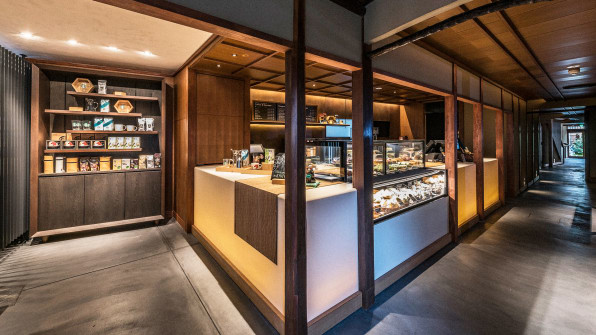Starbucks owns and operates over 28,000 stores worldwide. By 2025, the coffee behemoth is aiming for 10,000 of them–some old, some yet to open–to meet a new set of sustainability requirements. The Greener Stores Framework, as Starbucks is calling it, lays out six key standards the more sustainable stores must abide by, ranging from waste management tactics to design upgrades. And the company is making its new framework open-source, in the hopes that other retailers will follow their lead.
The standards themselves are fairly obvious, but in aggregate, according to John Kelly, SVP of global affairs and social impact, they could set Starbucks on a path toward greater conservation of resources. Kelly estimates that the program could divert around 50 million meals’ worth of food to people in need in the U.S. per year, and reduce water usage across its 10,000 “Greener Stores” by 30% (the exact stores will be determined after an audit of all stores later this year). In the long term, he says, the investments in infrastructure and design upgrades could also save Starbucks $50 million over the next 10 years in utilities expenses.
[Photo: Starbucks]Here are the areas of focus under the framework, which Starbucks developed with partners like the World Wildlife Fund and the U.S. Green Buildings Council:
- Energy and water conservation. The company will be purchasing new technology and upgrading aspects of their stores like weatherization to drive down water use by 30% and energy use by 25%. “We think we can save over 1 billion gallons of water each year in the U.S. and Canada,” Kelly says. “The best technology costs more, but the efficiencies it creates are worth it.”
- Renewable energy. Either through purchasing credits or making direct investments into the grid, Starbucks will source 100% of the energy used across its U.S. and Canadian stores from renewable sources.
- Responsible materials. The company will ensure that materials that go into store construction, as well as those for product packaging, are sustainably sourced.
- Waste diversion. Starbucks has an existing partnership called FoodShare with Feeding America to donate unsold food in the U.S., but under the framework aims to scale both that program and its waste diversion efforts across other countries like Japan, Mexico, and the U.K.
- Healthy environments. Starbucks will take measures to ensure air quality, temperature, and lighting across stores is optimized for both sustainability and comfort. “Especially a lot of cities around the world that struggle with air quality issues, our stores are seen as a respite, and the clean water and air is often the reason people come in,” Kelly says.
- Engagement. The company will double down on efforts to engage partners and employees in sustainable practices, and source information from them about how in-store sustainability efforts are proceeding, and where they can improve.
The plan, Kelly says, is to bring all 10,000 stores up to par under the framework in the next several years, and progress will be audited by SCS Global Services, a third-party verification organization. At that point, after they’ve proved the concept, the company says it will eventually bring all stores up to speed. Starbucks will be sharing their framework and progress with interested companies directly, and through influencer and industry events, so that any retailer aiming to implement similar efficiency standards will have access to a blueprint to follow.

